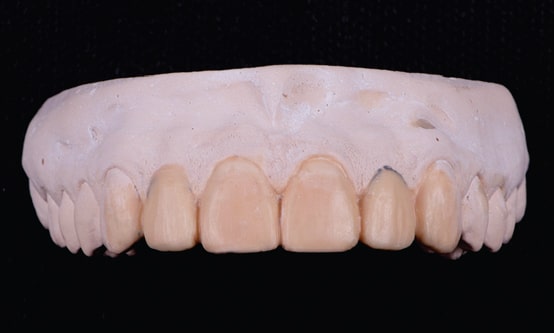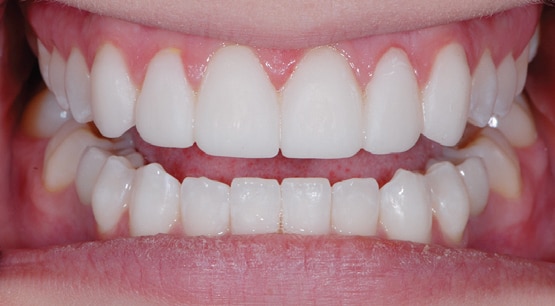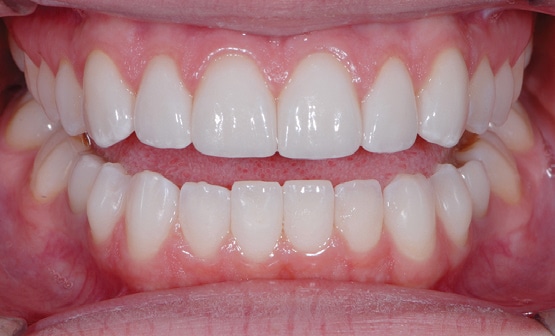Smile Design Cases Start With Imaging and Wax-Ups
As this case illustrates, the utilization of photography and a diagnostic wax-up supports successful outcomes when placing porcelain veneers.
Today’s patients desire a smile in which both the teeth and healthy gums improve overall facial esthetics. Achieving optimal outcomes in smile design cases requires excellent communication and meticulous treatment planning. Toward this goal, digital photography and diagnostic wax-ups are extremely important when planning therapy and establishing effective communications with laboratory technicians. For example, the diagnostic wax-up helps the ceramist understand the restorations’ desired contour and anatomy. These tools are equally critical when communicating with patients and finalizing the treatment plan.
When using smile design principles to improve esthetics, it’s crucial to pay close attention to function. It is only when both esthetics and function are properly addressed that clinicians can achieve ideal outcomes.

EVALUATION, DIAGNOSIS AND CASE PLANNING
In my office, we take a full series of American Academy of Cosmetic Dentistry accreditation photos of every patient who is interested in cosmetic treatment. Reviewing these images with the patient allows me to understand what he or she wants to achieve with therapy. At this point, I can begin to formulate an appropriate treatment plan that brings together form and function.
After evaluating the photographs, a wax-up is completed. Using the photographs and wax-up, I’m able to discuss the treatment plan with the patient and my ceramist to ensure the outcome is predictable. These steps were used in the case illustrated here (Figure 1 through Figure 4), which involved a 24-year-old female who opted for porcelain veneers to improve her smile.

KEY CLINICAL CONCERNS
Starting with the photographs, I evaluate how the patient’s current teeth fit with his or her facial dynamics. I will check if the incisal edge position follows the patient’s lip line, and whether the buccal corridors are deficient. Next, I examine tooth and gum tissue dynamics to see if there is gingival symmetry. Other evaluation points include checking for tooth size discrepancies and verifying if the teeth are in a position that will allow conservative treatment.
Additionally, I want to be sure there are no functional issues that must be addressed before treatment. Clinically, I will determine if there is enough overjet, and check for possible abnormal wear patterns.

TEST DRIVE AND SUMMARY
Once I have reviewed the photos and formulated my clinical strategy, I use the wax-up to test drive my treatment plan. It helps me visualize both the esthetic and functional outcomes of the case. Taking this one step further, using the wax-up to fabricate the patient’s provisionals is the ultimate test of the treatment plan.
As with any cosmetic procedure, smile design must be built on sound case planning. Establishing the ideal esthetic position of the maxillary anterior teeth to enhance the patient’s facial esthetics is the proper starting point. From there, the clinician can determine the position of the maxillary posterior teeth and mandibular teeth based on smile design principles and function. And from beginning to end, digital photography and the diagnostic wax-up allow the treatment plan to come to life.

Adapted with permission, Journal of Cosmetic Dentistry. ©2022. American Academy of Cosmetic Dentistry. All rights reserved. 608-222-8583; AACD.com.
American Academy of Cosmetic Dentistry
800-543-9220
From Decisions in Dentistry. July 2022;8(7)25.


